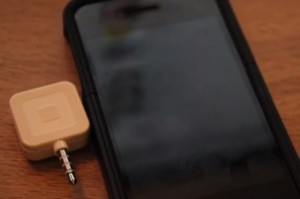According to a new study, 33 percent of the people with accounts with that institution are willing to pay a fee.
The results of a study conducted by research company SNL Financial have now been released and they have shown that it is the customers of the Bank of America that are most willing to pay an additional monthly fee in order to have access to mobile banking features.
This shows that there are some customers who would be willing to pay to use a mobile app from their lenders.
The research took into account the responses of customers from nine large banks across the United States. Among its questions was whether or not the respondents would be willing to pay a monthly fee of $3 in order to be able to continue the use of their mobile banking apps. Among the customers from the Bank of America, 33 percent said that they would be willing to pay the additional fee to use the smartphone app from their bank. That was the highest percentage of any of the bank customers that were surveyed. In second place was Citigroup, from which 31 percent said that they would be willing to pay that same fee.
The report did not suggest why that specific bank’s customers were more willing to pay for mobile banking.
 In terms of the other seven banks that were involved in this mobile apps study, the percentage of customers who said that they would be willing to pay an additional $3 per month in order to use the application were as follows:
In terms of the other seven banks that were involved in this mobile apps study, the percentage of customers who said that they would be willing to pay an additional $3 per month in order to use the application were as follows:
• 29 percent – U.S. Bank
• 26 percent – TD Bank
• 25 percent – USAA
• 24 percent – Wells Fargo
• 24 percent – Chase Bank
• 22 percent – PNC Bank
• 18 percent – Capital One
This could be some very useful insight for banks, which are currently facing an ongoing time of low interest rates and which have been facing a struggle in finding ways to boost their revenues and ensure their growing profitability. Equally, banks have been observing a growth in the number of their consumers that have been embracing mobile banking features.
Square has launched a new service that aims to help businesses connect with mobile consumers
Square, a prominent mobile payments firm operating in North America, has announced the launch of a new service, called Square Cash, for businesses in the United States. Square had been the most prominent mobile payments firm in the country for a time before the market became crowded with competitors. As large companies like PayPal and Apple have become more involved in the mobile commerce space, Square has had to find new ways to compete and attract the support and attention of mobile consumers.
Square Cash could be a boon for businesses
Square Cash is designed to deposit payments directly into a business’ bank account, rather than placing these funds into a holding account. The company is also offering what it believes to be a competitive rate for transactions, with this rate being 1.5%. This is lower than the rate offered by some of Square’s competitors, which may make it more attractive to businesses that are becoming more interested in mobile payments.
Square launches $Cashtags in order to inform consumers when they can make a mobile payment at a business
 Square has also launched a new initiative, called $Cashtags, which involves notifying consumers that they are able to use mobile payments at stores that are supporting Square Pay. These $Cashtags are meant to work in a way similar to hashtags on Twitter, providing businesses with a way to inform consumers that they can make payments using Square Cash. These tags can be personalized, which would offer consumers information about products that they may be interested in as well.
Square has also launched a new initiative, called $Cashtags, which involves notifying consumers that they are able to use mobile payments at stores that are supporting Square Pay. These $Cashtags are meant to work in a way similar to hashtags on Twitter, providing businesses with a way to inform consumers that they can make payments using Square Cash. These tags can be personalized, which would offer consumers information about products that they may be interested in as well.
Square Cash may appeal to businesses that want to connect with mobile consumers
Mobile payments have become quite popular among consumers, but relatively few businesses support this new form of commerce. This has to do with concerns regarding security, but companies like Square have been making strides in improving the safety of mobile commerce as a whole. With its new service, Square may be able to find renewed support among businesses that are investing in engaging mobile consumers.
 In terms of the other seven banks that were involved in this mobile apps study, the percentage of customers who said that they would be willing to pay an additional $3 per month in order to use the application were as follows:
In terms of the other seven banks that were involved in this mobile apps study, the percentage of customers who said that they would be willing to pay an additional $3 per month in order to use the application were as follows:
 Square has also launched a new initiative, called $Cashtags, which involves notifying consumers that they are able to use mobile payments at stores that are supporting
Square has also launched a new initiative, called $Cashtags, which involves notifying consumers that they are able to use mobile payments at stores that are supporting 